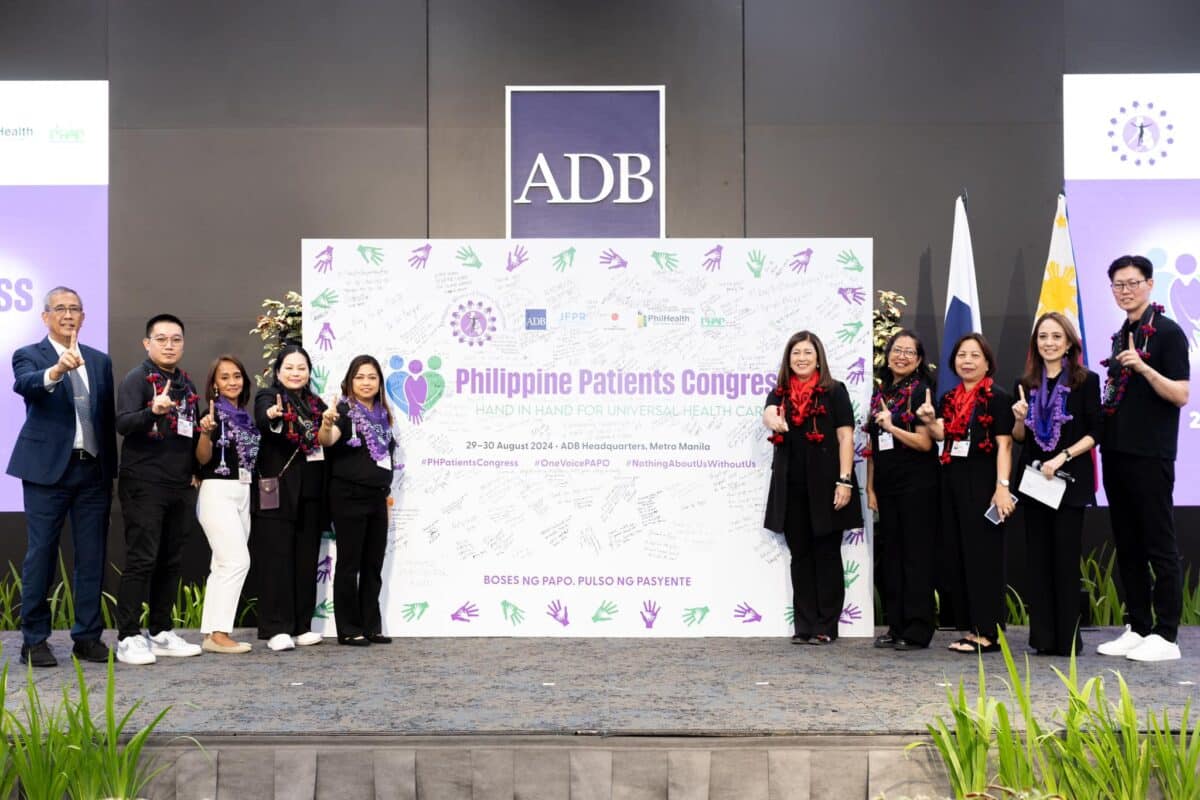Closing the Gap: Experts tackle patient safety and vaccine hesitancy at Philippine Patient Congress
The Philippines has recently achieved a significant milestone by exiting the list of 20 nations with the highest number of zero-dose children. This reflects a positive shift in routine immunization coverage and ongoing efforts to strengthen vaccination programs across the country. However, despite this progress, challenges remain, particularly in ensuring patient safety and addressing gaps in vaccination efforts.
These issues were at the forefront of discussions during the recent Philippine Patient Congress organized by the Philippine Alliance of Patient Organizations (PAPO). The event themed “Hand in Hand for Universal Healthcare” brought together healthcare experts, policymakers, and advocates. Former Health Undersecretary Dr. Eric Tayag shared his insights on the country’s vaccination strategy, emphasizing the need for a comprehensive approach to sustain the gains made and further improve public health outcomes.
Addressing gaps in national immunization strategy
Dr. Tayag identified three key gaps that need to be addressed to build on the success of the country’s immunization efforts.
First, he pointed out vaccine hesitancy largely driven by misinformation. Vaccine hesitancy refers to the reluctance or refusal to have oneself or one’s children vaccinated against infectious diseases despite availability of the vaccination. He stressed the importance of robust public education campaigns to combat false information and build public trust in vaccination programs. Dr. Tayag highlighted that without public trust, the progress of vaccination efforts could be potentially reversed. “The goal of achieving a 90 percent fully immunized children population is not just aspirational — it remains a significant challenge,” Dr. Tayag remarked.
Secondly, he cited logistical gaps within the vaccine supply chain. He noted instances when vaccines were available, but essential components such as needles, syringes, and diluents were not. “The issue is complex, involving various factors such as logistics, timely procurement, vaccine availability, and distribution. Are the vaccines delivered on time? Are they widely distributed to minimize wastage and ensure safety? This is a microcosm of the broader challenges in the world of vaccination,” Dr. Tayag explained. He called for better coordination and planning to ensure that all necessary materials are available to fully utilize the vaccines and protect public health.
The third gap Dr. Tayag highlighted was the shortage of skilled healthcare providers to administer the vaccines. The lack of trained healthcare workers remains a significant obstacle to achieving robust vaccination coverage. “It’s not the vaccines themselves that save lives—it’s the act of vaccination,” he stated. “Imagine having all the resources to purchase vaccines, yet not a single child gets vaccinated because the vaccines didn’t arrive on time, there were no syringes or needles, no healthcare providers to administer the shots, or because of vaccine hesitancy and poor storage conditions. These challenges are multifaceted, and unless they are addressed using today’s tools, we risk failure.” Her urged for increased investment in training programs and the recruitment of healthcare professionals to ensure that vaccines reach every corner of the country, particularly the remote and underserved communities.
The role of digitalization in patient safety and vaccination
Dr. Tayag linked these challenges to the broader issue of patient safety and underscored the importance of adopting a digital mindset to address these gaps. He argued, “Leveraging technology is crucial for overcoming barriers such as misinformation and logistical inefficiencies.” Among the innovations that can enhance patient safety and improve vaccination coverage are the utilization of electronic health records, online reporting of adverse events, telemedicine, and wearable technology. He warned, “Failing to embrace these technological advancements could result in missed opportunities to advance public health and protect the population from preventable diseases.”
The Patient Congress also highlighted the importance of private-public partnership in advocating for increased access to medicines and vaccines and improved healthcare delivery. The collective efforts of the government, healthcare community, and pharmaceutical industry are crucial in advancing the country’s public health goals and achieving universal healthcare for all.
ADVT.
This article is brought to you by Patient Congress.
Read more stories here:
SM in Mindanao: Transforming retail, education, and culture for a stronger community
Expanding the reach of ‘Safe Schools, Safe Kids’: Unilab’s 3SK program goes nationwide
Jean Henri Lhuillier: The visionary behind Cebuana Lhuillier’s innovative Cebuana Lhuillier Gold Bar
